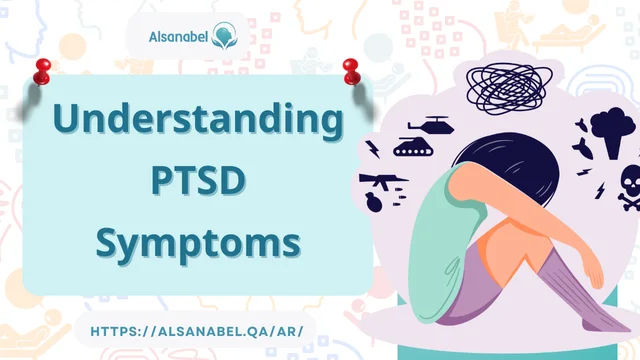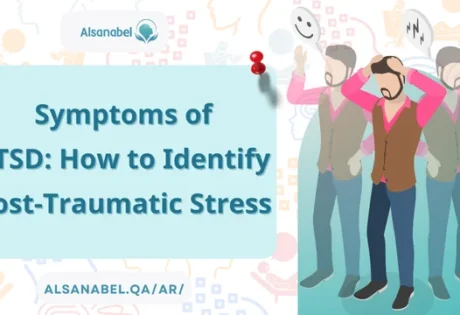
Post-Traumatic Stress Disorder (PTSD) is a mental health condition that can develop after someone experiences or witnesses a traumatic event. These events might include natural disasters, accidents, violent assaults, or any situation that threatens an individual’s safety or well-being. PTSD symptoms can manifest in a variety of ways, both emotionally and physically, and recognizing these symptoms early is critical for effective management and treatment. In this article, we will explore the symptoms of PTSD, how they impact daily life, and strategies for managing the condition.
Understanding PTSD Symptoms
PTSD symptoms can be complex and vary from person to person. However, they typically fall into four main categories: intrusive thoughts, avoidance, negative changes in mood and thinking, and changes in physical and emotional reactions. These symptoms can begin soon after the trauma, or they may appear months or even years later.

1. Intrusive Thoughts and PTSD Flashbacks
One of the most distressing symptoms of PTSD is the presence of intrusive thoughts and memories. Individuals may repeatedly relive the traumatic event through PTSD flashbacks or nightmares, which can feel incredibly real and overwhelming. Flashbacks often cause individuals to feel as though they are re-experiencing the trauma, with all the emotions and physical sensations they endured during the original event.
Intrusive thoughts are uncontrollable and can be triggered by specific stimuli, also known as PTSD triggers, which remind the individual of the traumatic experience. These triggers can be anything from a particular sound or smell to visiting a location similar to where the trauma occurred.
2. Avoidance
Avoidance is another hallmark symptom of PTSD. People with PTSD often go to great lengths to avoid anything that reminds them of the trauma, including people, places, activities, or even specific thoughts and feelings. This avoidance can significantly limit a person’s life, leading them to withdraw from social interactions, avoid going out in public, or quit work or other daily responsibilities to steer clear of potential triggers.
3. Negative Changes in Mood and Thinking
PTSD symptoms can also result in significant negative shifts in mood and thinking patterns. Individuals may feel emotionally numb, disconnected from others, or experience overwhelming guilt, shame, or fear. They might develop a negative outlook on life, often blaming themselves for the trauma or believing that they will never feel safe or happy again.
People with PTSD may also lose interest in activities they once enjoyed and experience difficulty maintaining relationships due to their emotional detachment.
4. Physical and Emotional Symptoms of PTSD
The physical symptoms of PTSD can be just as challenging as the emotional ones. Many people with PTSD experience hyperarousal, which is a state of constant alertness and anxiety. This can result in:
- Difficulty sleeping: Individuals may suffer from insomnia due to nightmares or the constant fear of danger.
- Irritability or anger: A person with PTSD might have sudden outbursts or feel irritated by seemingly small issues.
- Hypervigilance: Being constantly on guard or feeling jumpy can make it difficult to relax.
- Difficulty concentrating: PTSD can impact a person’s ability to focus on tasks or remember important information.
These emotional and physical symptoms of PTSD can lead to chronic stress and other health issues, such as headaches, gastrointestinal problems, or high blood pressure.
How PTSD Affects Daily Life
PTSD can profoundly impact every aspect of a person’s life. For some, the overwhelming nature of the symptoms makes it difficult to function normally at work, maintain relationships, or even carry out everyday tasks like running errands or attending social events.
- Social isolation: Due to avoidance and emotional detachment, individuals with PTSD may withdraw from their social circle, leading to loneliness and isolation.
- Work difficulties: Concentration problems and the fear of triggers can affect performance at work or school, causing stress or job loss.
- Relationship struggles: PTSD can create tension in relationships, as individuals may struggle to communicate their emotions or avoid intimate connections with others.
Understanding how PTSD affects daily life can help caregivers and loved ones provide the right support and seek professional help like Dr. Sanabel Al Akras when necessary.
How to Manage PTSD Symptoms?
Managing PTSD symptoms is possible with the right combination of treatments, self-care strategies, and support from healthcare professionals. Mental health services Qatar offer comprehensive care to help individuals cope with PTSD.
1. Therapy
Therapy is one of the most effective ways to manage PTSD symptoms. Cognitive Behavioral Therapy (CBT) and exposure therapy are commonly used to help individuals process their trauma and learn how to confront their fears in a controlled and safe environment. Eye Movement Desensitization and Reprocessing (EMDR) is another therapeutic approach that helps patients reframe their traumatic memories.
2. Medications
In some cases, medications like antidepressants or anti-anxiety drugs may be prescribed to help manage the emotional and physical symptoms of PTSD. These medications can reduce hyperarousal, improve mood, and help with sleep issues.
3. Healthy Lifestyle Choices
Incorporating healthy habits into daily life can make a big difference in managing PTSD symptoms. Regular exercise, a balanced diet, and sufficient sleep all help reduce stress and improve emotional resilience. Mindfulness practices, such as meditation or yoga, can also help individuals stay grounded and calm.
4. Support Groups
For many people, connecting with others who have experienced similar trauma can be incredibly helpful. PTSD support groups provide a safe space for individuals to share their experiences, exchange coping strategies, and gain emotional support. In Qatar, mental health services Qatar offer access to various support groups and community resources for individuals dealing with PTSD.
How Long Do PTSD Symptoms Last?
The duration of PTSD symptoms varies greatly from person to person. Some individuals may experience symptoms for only a few months, while others may struggle with PTSD for years or even a lifetime. Early intervention and treatment are key to managing the disorder effectively and reducing the intensity and duration of the symptoms.

Without treatment, PTSD can become a chronic condition that affects every aspect of life. However, with appropriate care and support at Al Sanabel Specialized Psychiatric Center In Qatar, individuals can manage their symptoms and lead fulfilling lives.
PTSD Symptoms FAQs
1. What are the symptoms of PTSD?
Symptoms of PTSD include intrusive thoughts, flashbacks, avoidance behaviors, negative mood changes, and hyperarousal. Physical symptoms, such as difficulty sleeping, irritability, and hypervigilance, are also common.
2. How does PTSD affect daily life?
PTSD can severely impact daily life, making it difficult to work, maintain relationships, and carry out daily tasks. Symptoms like avoidance, emotional detachment, and hypervigilance can lead to social isolation and decreased productivity.
3. What are the physical symptoms of PTSD?
Physical symptoms of PTSD include insomnia, headaches, chronic fatigue, gastrointestinal problems, and hyperarousal, such as feeling constantly on edge or jumpy.
4. How is PTSD managed?
PTSD is managed through a combination of therapies like Cognitive Behavioral Therapy (CBT), medications such as antidepressants, and lifestyle changes that include exercise, mindfulness, and support groups.
5. How long do PTSD symptoms last?
The duration of PTSD symptoms varies. With early treatment, symptoms can improve within months. Without treatment, however, PTSD can become a long-term condition, lasting for years or even a lifetime.
Recognizing the symptoms of PTSD is the first step toward seeking help and managing the condition. While PTSD can have a profound impact on daily life, with the right support and professional care from mental health services Qatar, individuals can learn how to manage their symptoms and regain control over their lives. By understanding the emotional and physical toll of PTSD, both sufferers and their loved ones can work together to create a path toward healing.

